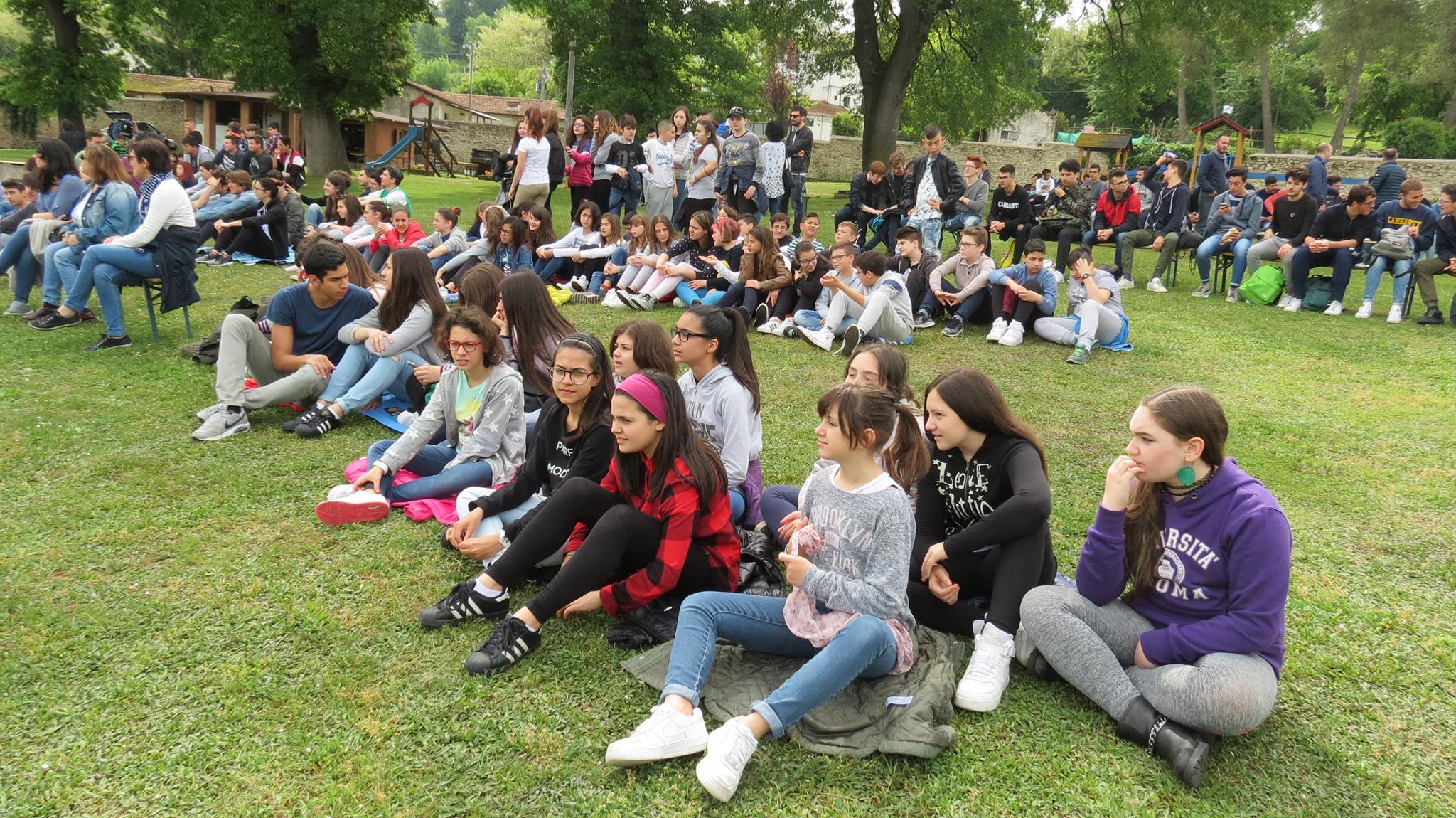“What’s done cannot be undone, but at least you can stop it form happening again.” Anne Frank, May 7th, 1944
A forty minute drive through towns, hills and valleys seperates me from Serivigliano, Italy. When I set off to research and write this article I had no idea it would be different. I soon discovered that simply writing the story was not enough. If I wanted the message to reach the reader’s heart, this time, I would have to do more than my best to weave and braid terms and images into feelings and emotions.
Professor Paolo Giunta La Spada, Scientific Director of the Associazione Casa della Memoria (The House of Memory Association) greets me infront of an old train station, today site of the organization’s headquarters and museum.


A chill ran down my spine as we stepped through the entrance of what was once a nazi-fascist concentration camp. The tall brick wall that imprisoned the suffering and humiliation of thousands of human beings still stands, as a ghastly reminder of the atrocities that took place during both World War I and II. Every brick echoed the words: we must not forget!

Why is this spot so important? I asked Professor La Spada
“The prison camp and the old train station, today called The House of Memory is an area where all the major Italian tragedies of the 1900’s took place: human imprisonment during both World War I and II; persecution, Jewish confinement and deportation to death camps; Istria-Dalmatian refugeesim, it all happened here.
The historical itinerary of the Servigliano Camp embraces the entire identity of our land: it reveals the contraddictions, faults, the often cruel and vicious realities, the generosity and heroism. It sheds light on the prisoner’s stories, allowing us to discover, investigate and understand. This benefits younger generations because it helps them see the terrible consequences of war. It brings awareness with regard to the need, for each one of us, to refuse totalitarian ideologies and racism on a daily basis.”

The commemorative plaque above reads:
In this place, beginning in October 1943, 61 Jewish people were imprisoned for racial reasons. On May 3rd 1944 an airstrike by allied forces gave them the possibility to escape. 30 were helped and hidden with courage and sensibility by a number of families of the Valle del Tenna. But for 31 others fate had other plans. On May 5th 1944 they were deported into the hell of German concentration camps. Only 3 survived the barbarity of the killing fields and were able to once again witness the light of freedom and dignity.
May 2002
” 30 were helped and hidden with courage and sensibility by a number of families of the Valle del Tenna.”
I invite you to watch the brief documentary posted below. It is a testament of love and friendship that crushes the wickedness and horror of war. Inside the tears and the smiles lies a hidden message, one that is not spoken but felt. It moves thought and awakens contemplation. In the face of violence, humanity can become one and walk the paths of life as brothers and sisters toward peace. The choice to do so is but ours.
Italian version
Un Viaggio Attraverso Il Passato Porta Speranza Per Il Futuro
Servigliano, Italia. Il ricordo delle atrocità portate dalla guerra ha trasformato un ex campo di concentramento in Parco della Pace.
“Quel che è avvenuto non può essere cambiato ma possiamo impedire che accada di nuovo.” Anne Frank, 7 maggio 1944
Quaranta minuti di macchina attraverso paesini, valli e colline mi separano da Servigliano. Quando ho iniziato a fare ricerca per scrivere questo articolo non avevo capito che sarebbe stato diverso. Ho presto scoperto che semplicemente raccontare la storia non sarebbe stato sufficiente. Se volevo arrivare al cuore del lettore, questa volta avrei dovuto fare più del mio meglio per tessere ed intrecciare parole, immagini sentimenti ed emozioni.
Il Professor paolo Giunta La Spada, Direttore Scientifico dell’ Associazione La Casa Della Memoria di Servigliano mi accoglie davanti all’ingresso di una vecchia stazione ferroviaria, oggi restaurata e divenuta museo e sede dell’ organizzazione.
Un brivido mi attraversa mentre ci accingiamo a varcare l’ingresso di quello che un tempo fu un campo di concentramento nazi-fascista. L’imponenete muro di mattoni che imprigionò le sofferenze e le umiliazioni di migliaia di esseri umani è ancora in piedi. Come un monito di sembianza spettrale ci ricorda le atrocità commesse durante la prima e la seconda guerra mondiale. Ogni mattone parla, grida: non possiamo dimenticare!
Perchè questo luogo è così importante? Chiedo al Professor La Spada
“Il Campo di prigionia, con la ex-stazione ferroviaria, oggi Casa della Memoria, è un luogo dove si sono consumate le grandi tragedie italiane del Novecento: la prigionia dell’epoca della prima guerra mondiale; la prigionia della seconda guerra mondiale; la persecuzione, l’internamento e la deportazione degli ebrei nei campi di sterminio; la profuganza giuliano-dalmata.
Il percorso storico del Campo di Servigliano racchiude per intero l’identità del nostro territorio: ne svela le contraddizioni, le colpe, le crude e spesso atroci realtà, gli slanci e gli eroismi, e svela vicende di prigionieri e ospiti che vanno scoperte, indagate, conosciute, al fine di mostrare alle giovani generazioni quali conseguenze terribili rechino le guerre di ogni genere, e quanto sia necessario sviluppare ogni giorno, e in ognuno di noi, il rifiuto delle ideologie totalitarie e di ogni razzismo.”

“30 vennero aiutati e nascosti dal coraggio e dalla sensibilità di alcune famiglie della Valle del Tenna.”
Vi invito ora a visonare il breve documentario qui postato. E’ testamento di come l’amore e l’ amicizia possano schiacciare la malvagità e gli orrori della guerra. Lacrime e sorrisi nascondono un messaggio non detto, bensì sentito. Accendono il pensiero e risvegliano la conteplazione. Al cospetto della violenza, l’umanità è capace di diventare una sola cosa, di camminare lungo i sentieri della vita da fratelli e sorelle verso la pace. La scelta di essere e rimanere uniti o divisi spetta solo a noi.
(video postato sopra)


